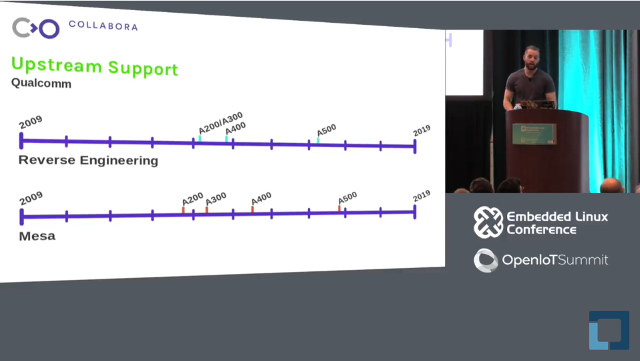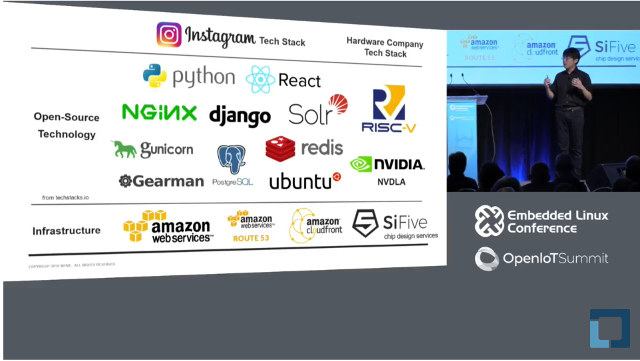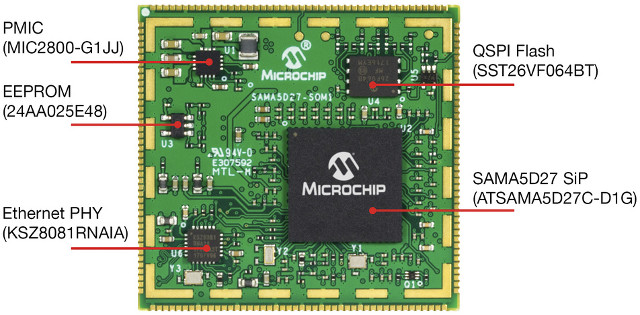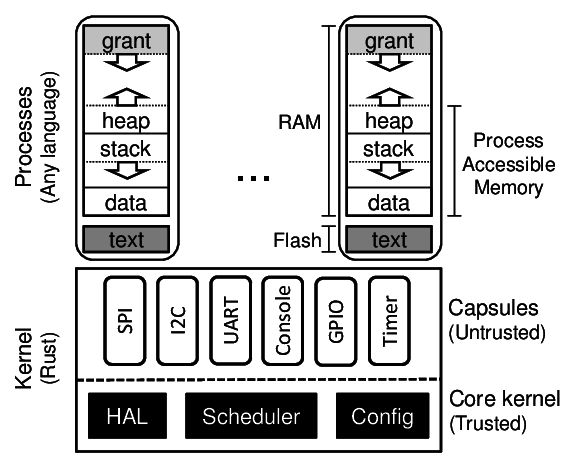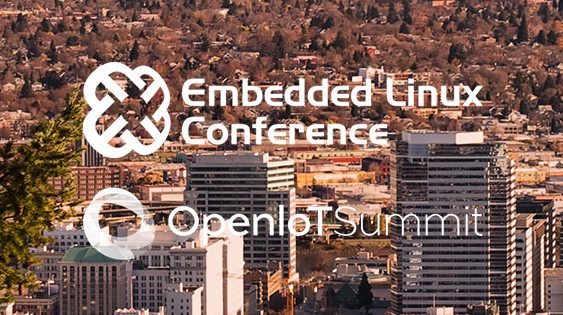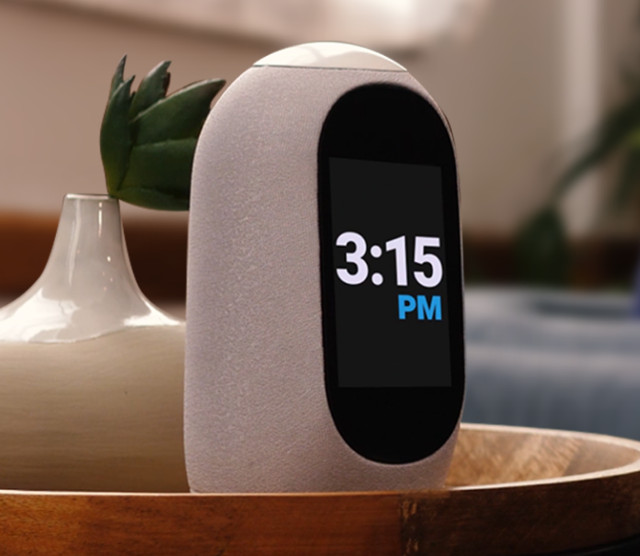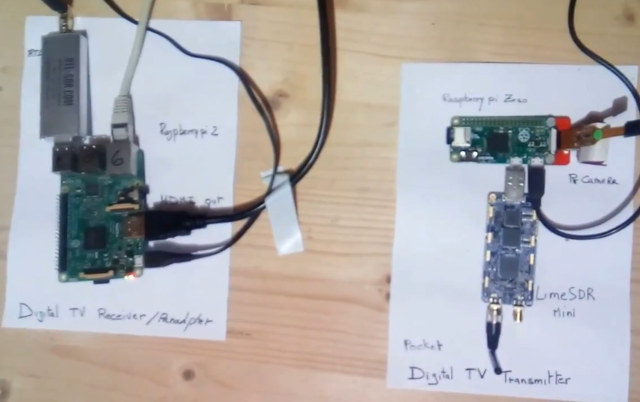The Embedded Linux Confernce is on-going, and the Linux Foundation has been uploading videos about talks in a timely manner on YouTube. I checked out at RISC-V keynote yesterday, but today I’ve watched a talk by Robert Foss (his real name, not related to FOSS) from Collabora entitled “Progress in the Embedded GPU Ecosystem”, where he discusses open source software support in Linux/Mesa from companies and reverse-engineering support. The first part deals with the history of embedded GPU support, especially when it comes to company support. Intel was the first and offers very good support for their drivers, following by AMD who also is a good citizen. NVIDIA has the Nouveau driver but they did not really backed it up, and Tegra support is apparently sponsored by an aircraft supplier. Other companies have been slower to help, but Qualcomm has made progress since 2015 and now support all their hardware, […]
RISC-V Keynote at Embedded Linux Conference 2018 (Video)
The Embedded Linux Conference and OpenIoT Summit 2018 have just started, and the Linux Foundation has already uploaded a few keynote videos to YouTube, including the one by Yunsup Lee, Co-Founder and CTO, SiFive, entitled “Designing the Next Billion Chips: How RISC-V is Revolutionizing Hardware”. Yunsup explains the current problem with chip development, and go through the open source RISC-V solutions offered by Sifive. Currently design a chip has a high upfront (NRE = non-recurring engineering) costs, is time-consuming (1.5 to 2 years at least) and silicon vendors normally target high volume production, but now many applications like IoT or machine learning require custom chips that may not be (yet) manufactured in such high volume. The solution is to adapt some idea from open source software to open source hardware in order to lower the costs, enable fast prototyping, and involve the community of designers and software developers. He took […]
Microchip Launches $39 Industrial Grade System-on-Module with SAMA5D2 System-in-Package
Last fall, Microchip introduced four SAMA5D2 systems-in-package (SiP) combining the Cortex A5 processor with 16 to 128 MB DDR2 in a single package, and at the time, the company also offered ATSAMA5D27-SOM1-EK1, a fast prototyping and evaluation platform for the SiP that was designed with a baseboard and a soldered down ATSAMA5D27-SOM1 system-on-module. The kit was available for $245, and pricing for the SiP started at around $9 per unit for 5K order. The company has now started to offer ATSAMA5D27-SOM1 module separately with pricing starting at $39 each for 100 pieces order. ATSAMA5D27-SOM1 specifications: SiP – Microchip ATSAMA5D27C-D1G SiP with Cortex-A5 MPU @ 500 MHz, 128 MB DDR2 DRAM Storage Microchip SST26VF064BT 64Mb Serial Quad I/O (QSPI) flash memory for boot code (Linux kernel or RTOS) Microchip 24AA025E48 2Kb Serial EEPROM with EUI-48 Note Identity for the Ethernet MAC address Connectivity – Microchip KSZ8081RNAIA 10Base-T/100Base-TX Ethernet PHY for wired […]
Tock Open Source OS for Secure IoT Systems Runs on Arm Cortex-M Microcontrollers
We already have a fair share of open source operating systems running on Arm Cortex-M microcontrollers with FreeRTOS, mbed OS, Zephyr OS, RIOT, and many others. Earlier this morning, as I wrote about the Embedded Linux and IoT Summit 2018, I discovered you can now also add Tock to the list, with the operating system specifically designed for (secure) IoT on Arm Cortex-M MCUs. According to the abstract, Tock aims to enable more secure and extensible IoT systems by using a language sandbox and hardware enforced mechanism to isolate third-party and other untrusted code in the system. The operating systems is comprised of three components: A trusted core kernel written in Rust language with a HAL, scheduler and platform-specific configuration Capsules compiled with the kernel and use Rust’s type and module systems for safety; typically used for drivers & virtualization layers User-space processes using the MPU for hardware protection at runtime; […]
Embedded Linux Conference & IoT Summit 2018 Schedule
The Embedded Linux Conference 2018 and the OpenIoT Summit 2018 will jointly take place next month, on March 12 – 14, 2018 in Portland, Oregon, USA. The former is a “vendor-neutral technical conference for companies and developers using Linux in embedded products”, while the latter is a “technical conference for the developers and architects working on industrial IoT”. The Linux Foundation has already published the schedule, and it’s always useful to learn what will be discussed about even for people who won’t attend. With that in mind, here’s my own virtual schedule with some of the talks I find interesting / relevant to this blog. Monday, March 12 10:50 – 11:40 – Progress in the Embedded GPU Ecosystem by Robert Foss, Collabora Ltd. Ten years ago no one would have expected the embedded GPU ecosystem in Linux to be what it is now. Today, a large number of GPUs have […]
Open Source Software Releases – VLC 3.0 and Android-x86 7.1-r1
Two completely unrelated open source projects have released a stable version of their software this week, but instead of writing a post for each I’ll write about them in a single post. VLC 3.0 Vetinari VLC developers have just released version 3.0 – codenamed Vetinari – of the popular media player with new features such as ChromeCast support, and 8K video playback. Other highlights from the release include: Hardware decoding enabled by default to get 4K and 8K playback 10-bit and HDR support (only on Windows 10 Fall Creators Update for now) 360 video and 3D audio, up to Ambisoncics 3rd order Allows audio passthrough for HD audio codecs Can play Blu-Ray Java menus: BD-J Browsing of local network drives and NAS VLC 3.0 is also the first major version to be released for all platforms at the same time, and you can download VLC 3.0 for Windows, Mac OS […]
Mycroft Mark II Smart Speaker / Voice Assistant Works with Open Source Software (Crowdfunding)
Smart speakers have gain a lot of traction over the last few years, but many of the solutions are based on Google Assistant or Amazon Alexa voice services, with both companies likely tracking your voice searches the same way they track your online searches to provide a “personalized experience” and sell you products or server ads that match your interests. If you don’t like being tracked that way, a solution is to use an open source voice assistant such as Mycroft, and install it on a Linux computer, Raspberry Pi 3 board, or Android device. The company also introduced Mark I reference hardware platform based on Raspberry Pi 2 in 2015, and while all those hardware options should be fine for the technically inclined, but not really suited to the typical end user, and AFAIK they all lack a microphone array for better hot word detection. So Mycroft has come […]
Building a Compact Digital TV Transmitter with Raspberry Pi Zero, Pi Camera, and LimeSDR Mini USB SDR Board
There are few affordable standalone systems that allow you to transmit video over the air, and back in 2016, I had the chance to check out V-Bridge Muses-β MPEG-2/-4 encoder and DTV modular taking HDMI or composite video input. It was easy to use and worked fine, but it would still cost close to $600, and might have been a little smaller. Evariste Okcestbon has now created its own digital TV transmitter prototype, combining LimeSDR Mini USB SDR board with Raspberry Pi Zero board, and instead of supporting external input from HDMI or AV ports, he used an official Pi camera for video, and was able to transmit the video over a 1.2 GHz connection to a Raspberry Pi 2 with an RTL-SDR dongle, with the Pi 2 board also taking care of displaying the video signal. The full flow of transmission can be summarized as follows: Video from […]


